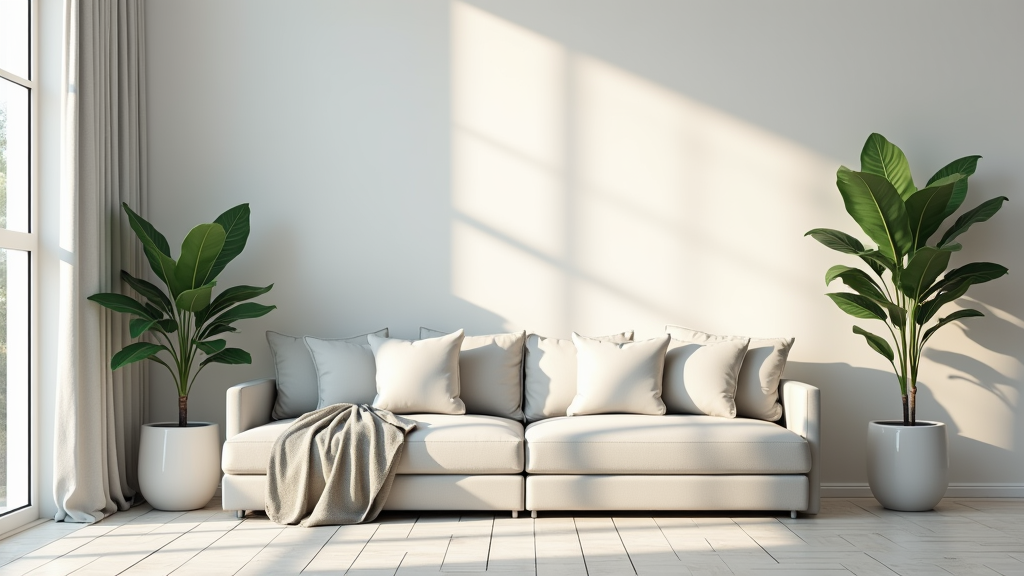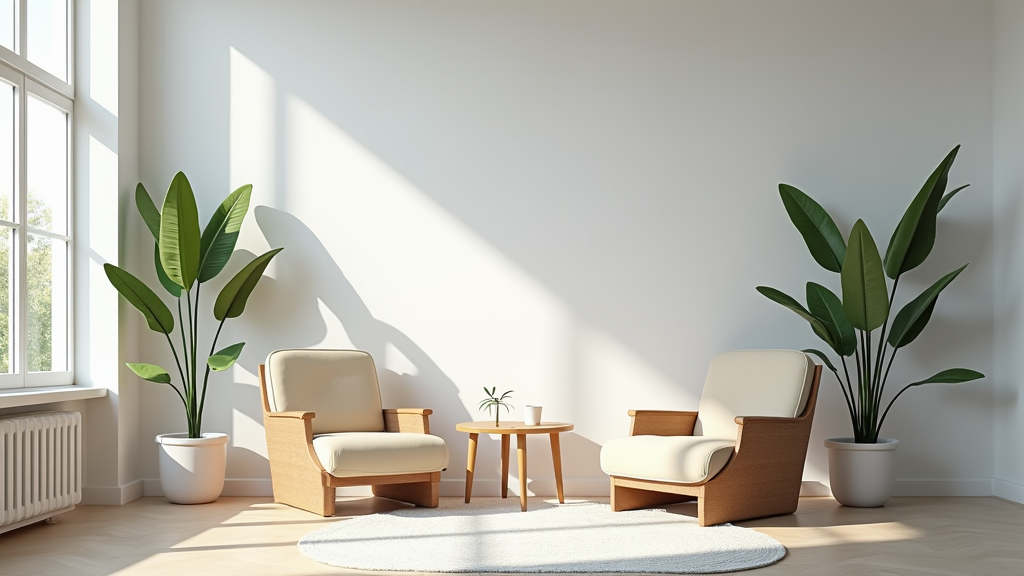Table of Contents
- Introduction
- Understanding the Basics
- Detailed Guide
- Double Pickleball Court Dimensions
- Additional Considerations
- Resources
- Conclusion
Introduction

Overview and Importance
Pickleball has surged in popularity, becoming one of the fastest-growing sports in the United States. Its accessibility and engaging gameplay have attracted players of all ages and skill levels. Whether you’re a seasoned athlete or a newcomer to the sport, understanding the dimensions of a pickleball court is essential for proper gameplay and court construction.
A regulation pickleball court measures 20 feet wide and 44 feet long. The net height is 36 inches at the sidelines and 34 inches in the middle. The non-volley zone, often called “the kitchen,” extends 7 feet from the net on both sides. These dimensions are not arbitrary; they are carefully designed to balance offense and defense, ensuring a dynamic and engaging game.
Why does understanding these measurements matter? Accurate court dimensions ensure fair play, allowing players to execute strategies and shots effectively. For those involved in court construction, adherence to these specifications is crucial for creating a safe and regulation-compliant playing environment. Furthermore, coaches and trainers rely on this knowledge to develop effective training drills and tactics that align with official rules.
Background
Pickleball’s origins can be traced back to 1965 on Bainbridge Island, Washington, where Joel Pritchard, Bill Bell, and Barney McCallum sought to create a game that the whole family could enjoy. Using a Wiffle ball, wooden paddles, and a badminton court, they laid the foundation for what would become the sport we know today. Over the years, pickleball has evolved from a backyard pastime to a nationally recognized sport with standardized rules and equipment.
Recent developments in pickleball include a surge in popularity, leading to increased demand for dedicated pickleball courts and facilities. This growth has also spurred efforts to standardize court dimensions and regulations across different organizations and tournaments. The USA Pickleball Association (USAPA) plays a crucial role in setting these standards, ensuring consistency and fair play at all levels of competition.
What You’ll Learn
In this guide, you will gain a comprehensive understanding of the core concepts related to pickleball court dimensions. We’ll explore the different zones and lines on the court, including the baseline, sidelines, non-volley zone, and service areas. You’ll learn the precise measurements and their significance in gameplay.
Furthermore, we will delve into the practical applications of this knowledge. Whether you are planning to build your own pickleball court, improve your playing strategy, or design effective training drills, understanding court dimensions is paramount. By the end of this guide, you’ll be equipped with the information you need to confidently navigate the world of pickleball and maximize your enjoyment of this exciting sport.
Understanding the Basics
Fundamental Concepts
Pickleball, a sport that combines elements of tennis, badminton, and table tennis, is rapidly gaining popularity. To truly appreciate and excel in this game, it’s crucial to grasp the fundamental concepts that govern gameplay. Let’s break down some key definitions and core principles.
- Baseline:The line at the back of the court, 22 feet from the net, running parallel to it. Players serve from behind the baseline.
- Sideline:The lines on the sides of the court, defining the boundaries of play. A ball landing on the sideline is considered in bounds.
- Centerline:The line that bisects the service courts, extending from the non-volley zone line to the baseline. It’s used to determine which service court a serve must land in.
- Non-Volley Zone (NVZ):Commonly known as the “kitchen,” this is the area within 7 feet of the net. Players cannot volley the ball while standing within the NVZ.
- Service Court:The area on either side of the centerline, bounded by the NVZ line, sideline, and baseline. Serves must land within the service court diagonally opposite the server.
Understanding the rules related to each zone and line is paramount. The non-volley zone rule, for instance, prevents players from aggressively smashing the ball at the net, adding a strategic element to the game. Knowing where you can stand and when you can volley significantly impacts your gameplay and decision-making.
Essential Components
Beyond the rules, the physical components of a pickleball court are integral to the game. The court’s dimensions and features are carefully designed to provide a balanced and enjoyable playing experience. Here’s a closer look at the essential components:
- Required elements:The essential elements include the court surface, the net, clearly marked lines, and adequate surrounding clearance space for player safety and movement.
Let’s delve into the primary and secondary aspects of the court, along with important variations.
- Court Dimensions:A standard pickleball court measures 44 feet (13.41 meters) in length and 20 feet (6.1 meters) in width. These dimensions are the same for both singles and doubles play.
- Net Height:The net spans the width of the court and has a specific height requirement. It measures 36 inches (0.914 meters) at the sidelines and 34 inches (0.864 meters) at the center.
- Non-Volley Zone:Extending 7 feet (2.13 meters) from the net on both sides, the non-volley zone plays a crucial role in dictating gameplay near the net.
- Service Zones:These are the areas where serves must land. They extend 15 feet (4.57 meters) from the net to the baseline, bisected by the centerline.
- Line Width:All lines on a pickleball court should be 2 inches (5.08 centimeters) wide. This standard width ensures clarity and visibility for players.
- Surface Material:Pickleball courts can be constructed from various materials, including asphalt, concrete, carpet, or specialized sports court tiles. The choice of material can affect the ball’s bounce and the players’ movement.
- Double Pickleball Court Dimensions:While the playing area remains the same, a doubles pickleball court allows 30 feet x 20 feet (9.14 m x 6.10 m) per court.
- Recommended total size including out-of-bounds area:A good court should be 24 feet wide by 54 feet long to accommodate player movement and safety.
- Optimal court size for better play and protection from missed balls:For enhanced play and safety, many pickleball enthusiasts recommend a court size of 30 feet wide by 60 feet long. This provides ample space for players to move freely and reduces the risk of collisions or missed balls entering adjacent courts.
Understanding these essential components ensures that you not only play the game correctly but also appreciate the nuances of court design that contribute to a fair and enjoyable experience.
Detailed Guide

Preparation
Before diving into the construction of your pickleball court, thorough preparation is crucial for a successful outcome. This involves gathering the necessary materials, preparing the area, and understanding important considerations that can impact the project.
First, assemble your required materials. You’ll need a measuring tape to ensure accurate dimensions, suitable paint for outdoor use, and stencils if you prefer a more precise and professional look for your lines. Most importantly, you will need the court surface material itself, whether you’re opting for concrete, asphalt, or a specialized sports surface.
Next, focus on the initial setup. This includes clearing the area of any debris, vegetation, or obstructions. Leveling the surface is paramount to ensure a consistent and safe playing field. Accurately mark the boundaries of the court according to official pickleball dimensions; this foundational step will guide the entire construction process.
Finally, consider several important factors. Always check local building codes and Homeowners Association (HOA) restrictions to avoid potential legal issues or fines. Ensure that the court has proper drainage to prevent water accumulation, which can damage the surface and create hazardous playing conditions. The surface quality is also key; it should be smooth, even, and durable to withstand regular use.
Step-by-Step Process
With the preparation complete, you can now move on to the actual construction. Follow these clear instructions and best practices to create a professional-quality pickleball court.
Begin by measuring and marking the court dimensions. A standard pickleball court is 44 feet (13.41 meters) long and 20 feet (6.1 meters) wide. Use your measuring tape and marking tools to accurately outline these dimensions on your prepared surface.
Next, mark the Non-Volley Zone, also known as the “kitchen.” This zone extends 7 feet (2.13 meters) from the net on both sides. Precisely mark this area, as it’s a crucial element of pickleball gameplay.
Establish the service zones, which are located 15 feet (4.57 meters) from the net on each side. These zones define where players must stand when serving.
Once all the dimensions are marked, it’s time to paint the lines. All lines should be 2 inches (5.08 centimeters) wide for official play. Use a high-quality, weather-resistant paint designed for outdoor surfaces. Apply the paint carefully, following your marked lines to ensure accuracy.
Finally, install the net. The net should be 36 inches (0.914 meters) high on the sides and 34 inches (0.864 meters) high in the center. Ensure the net is securely anchored and properly tensioned for optimal play.
To ensure the best results, use accurate measuring tools throughout the process. Apply multiple coats of paint for increased durability and visibility. Ensure the net is properly tensioned to maintain the correct height and prevent sagging.
Be aware of common mistakes. Inaccurate measurements can lead to an uneven and non-regulation court. An uneven surface can create safety hazards and affect gameplay. Using low-quality paint can result in premature fading and chipping, requiring frequent reapplication.
Advanced Techniques
For those seeking to elevate their pickleball court construction to the next level, consider these advanced techniques and expert tips.
For optimal results, consider hiring a professional contractor experienced in sports court construction. They possess the expertise and equipment to ensure a high-quality, durable court. Use pre-made stencils for precise and consistent line marking. This can significantly improve the appearance and accuracy of your court.
For enhanced player comfort, consider adding a cushioned surface. This can reduce impact on joints and provide a more enjoyable playing experience.
Optimize the court surface for grip and durability by incorporating non-slip smooth silica sand bases. This can improve traction and prevent slips and falls. Add adequate lighting for nighttime play, allowing you to enjoy pickleball even after the sun goes down.
Be prepared to troubleshoot potential issues. Addressing drainage problems promptly is essential to prevent water damage. Repair cracks in the surface as soon as they appear to maintain a smooth and safe playing area. Regularly adjust net tension to ensure it remains at the correct height and tautness.
Double Pickleball Court Dimensions
Understanding Double Court Layout
When planning for double pickleball courts, understanding the precise dimensions is crucial for both gameplay and construction. A double court setup essentially combines two standard pickleball courts side-by-side, with a specific separation to allow for safe and comfortable play.
The total length of a double pickleball court setup is 60 feet (18.29 meters). This measurement includes the length of the playing area and the non-volley zone, commonly known as the “kitchen,” at each end.
The total width of a double court, encompassing both courts, is 34 feet (10.36 meters). This width allows for two standard 20-foot-wide courts plus the separation barrier.
Each individual court within the double setup maintains the standard pickleball court dimensions of 30 feet in length and 20 feet in width (9.14 meters x 6.10 meters). This ensures that players experience the same gameplay dynamics as on a single court.
Importantly, there should be a separation of approximately 4 feet (1.22 meters) between the two courts. This barrier can be a physical fence, net, or simply marked space. This separation is necessary for player safety, preventing interference between games, and defining the boundaries of each playing area.
Construction Considerations
Building double pickleball courts requires careful consideration of several factors to ensure a safe, durable, and enjoyable playing environment.
Space Requirements: Before beginning construction, assess the available space. Remember to account for more than just the court dimensions. Consider additional space for players to move around the court, seating for spectators, and access points. Adequate space prevents overcrowding and enhances the overall playing experience.
Material Selection: The choice of materials significantly impacts the court’s performance and longevity. Common surfaces include asphalt, concrete, and specialized acrylic surfaces. Each material offers different levels of durability, maintenance requirements, and playing characteristics. Consider the climate, budget, and desired playing experience when selecting materials.
Barrier Implementation: Implementing a suitable barrier between the courts is crucial for preventing interference and ensuring player safety. Options range from simple net dividers to more robust fencing solutions. The barrier should be tall enough to prevent balls from easily crossing between courts and sturdy enough to withstand accidental impacts. Choose a barrier that complements the overall aesthetic and meets safety standards.
Additional Considerations

Clearance Space
When planning your backyard basketball court, it’s not enough to just consider the dimensions of the court itself. You also need to factor in adequate clearance space around the perimeter. This ensures player safety, prevents damage to surrounding property, and allows for more dynamic gameplay. Think about players chasing after loose balls or making quick pivots – sufficient space is crucial.
For side clearance, a minimum of 5 feet (1.52 meters) is highly recommended. This buffer zone allows players to safely move along the sidelines without running into fences, trees, or other obstacles. Insufficient side clearance can lead to injuries and frustrating gameplay.
End clearance is even more critical, particularly behind the baskets. We recommend at least 8 feet (2.44 meters) of space at each end. This allows players to safely drive to the basket, perform layups, and avoid collisions with walls or other structures. This space is also essential for rebounding and preventing balls from frequently going out of bounds.
Taking these clearance recommendations into account, the overall area required for a backyard basketball court, including the court itself and the surrounding space, is approximately 1800 square feet (167 square meters). This allows for comfortable and safe gameplay, making the investment worthwhile.
Surface Materials
The choice of surface material is a crucial decision that will impact the playability, durability, and maintenance of your backyard basketball court. Several options are available, each with its own set of advantages and disadvantages.
Common surface materials include asphalt, concrete, and specialized sports court tiles. Asphalt is a relatively inexpensive option and provides a decent playing surface. However, it can be prone to cracking and requires regular maintenance. Concrete is more durable than asphalt and offers a smoother playing surface, but it can also be harder on the joints. Sports court tiles, typically made of interlocking plastic or rubber, offer excellent shock absorption, are easy to install, and require minimal maintenance. They also provide excellent traction and are available in various colors.
Regardless of the material you choose, it’s essential to ensure that it possesses certain characteristics. The surface should be non-slip to prevent injuries, especially during wet conditions. Durability is also paramount, as the court will be subjected to constant use and exposure to the elements. Finally, the material should be weather-resistant to withstand rain, sun, and temperature fluctuations without deteriorating. Investing in a high-quality, weather-resistant surface will ensure that your basketball court remains playable and enjoyable for years to come.
Resources
Available Downloads
To assist you in planning and constructing your pickleball court, we’ve compiled a set of downloadable resources. These PDFs provide precise dimensions and layouts to ensure your court meets official standards and provides an optimal playing experience.
- <strong>Pickleball Court Dimensions PDF in Feet:</strong> This document provides a detailed diagram of a standard pickleball court with all measurements in feet. Ideal for those working with imperial units, this PDF is perfect for accurately marking out your court and ensuring it adheres to regulation sizes.
- <strong>Pickleball Court Dimensions PDF in Meters:</strong> For users who prefer the metric system, this PDF offers the same detailed court layout, but with all dimensions provided in meters. This resource is invaluable for precise measurements and construction using metric tools and materials.
- <strong>Double Pickleball Court Dimensions PDF:</strong> Planning to build multiple courts side-by-side? This PDF outlines the recommended spacing and dimensions for constructing double pickleball courts. It includes guidelines for optimal player movement and safety between adjacent courts.
<strong>Pickleball Court Dimensions PDF in Feet:</strong> This document provides a detailed diagram of a standard pickleball court with all measurements in feet. Ideal for those working with imperial units, this PDF is perfect for accurately marking out your court and ensuring it adheres to regulation sizes.
<strong>Pickleball Court Dimensions PDF in Meters:</strong> For users who prefer the metric system, this PDF offers the same detailed court layout, but with all dimensions provided in meters. This resource is invaluable for precise measurements and construction using metric tools and materials.
<strong>Double Pickleball Court Dimensions PDF:</strong> Planning to build multiple courts side-by-side? This PDF outlines the recommended spacing and dimensions for constructing double pickleball courts. It includes guidelines for optimal player movement and safety between adjacent courts.
External Links
For further information and to source the necessary materials for your pickleball court project, we’ve compiled a list of useful external links. These resources will help you understand the official guidelines and connect with reputable suppliers.
- <strong>USA Pickleball Association Guidelines:</strong> This link will take you directly to the official USA Pickleball Association website, where you can find the most up-to-date rules, regulations, and guidelines for pickleball court construction and play. It’s an essential resource for ensuring your court meets official standards.
- <strong>Construction Material Suppliers:</strong> This link provides a list of reputable suppliers of construction materials suitable for building your pickleball court. You’ll find options for court surfaces, fencing, nets, and other essential components, ensuring you can source high-quality materials for a durable and enjoyable playing surface.
<strong>USA Pickleball Association Guidelines:</strong> This link will take you directly to the official USA Pickleball Association website, where you can find the most up-to-date rules, regulations, and guidelines for pickleball court construction and play. It’s an essential resource for ensuring your court meets official standards.
<strong>Construction Material Suppliers:</strong> This link provides a list of reputable suppliers of construction materials suitable for building your pickleball court. You’ll find options for court surfaces, fencing, nets, and other essential components, ensuring you can source high-quality materials for a durable and enjoyable playing surface.
Conclusion

Summary of Key Points
Throughout this guide, we’ve explored the intricacies of constructing a pickleball court, from understanding the precise court dimensions and layout to offering practical tips for successful construction. We’ve emphasized the importance of adhering to official regulations to ensure fair play and optimal enjoyment. Remember, the standard pickleball court measures 20 feet wide and 44 feet long for both singles and doubles play. The non-volley zone, or “kitchen,” extends 7 feet from the net on both sides, creating a crucial area that dictates strategic gameplay. We also delved into construction tips, including selecting the right surface material, ensuring proper drainage, and installing appropriate fencing and lighting.
Final Recommendations
As you embark on your pickleball court project, we strongly recommend prioritizing accuracy in all measurements. Even slight deviations can impact gameplay and potentially lead to disputes. Investing in professional installation is highly advisable, especially for the court surface and fencing. Professionals possess the expertise and equipment to ensure a level, durable, and safe playing surface. Proper installation will not only enhance the playing experience but also extend the lifespan of your court, saving you money in the long run. Taking these steps will ensure your court meets regulations and provides a safe, enjoyable playing experience for everyone.
Future Trends
The world of pickleball is constantly evolving, and we can expect to see exciting advancements in court surface technology and design in the years to come. Manufacturers are continually developing new materials that offer improved grip, reduced impact, and enhanced durability. We may also see the integration of smart technologies into pickleball courts, such as sensors that track player movements and performance metrics. Furthermore, expect to see more innovative court designs that optimize space and aesthetics, blending seamlessly with the surrounding environment. These future trends promise to elevate the pickleball experience even further, making the game more accessible, enjoyable, and technologically advanced.
